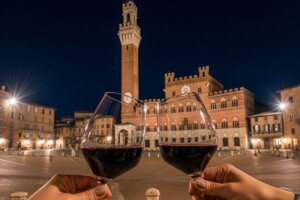A gramophone, a power outlet, headphones, chairs, slippers, and a really interesting object: a signature beehive by the Polish designer Anna Loskiewicz. Why is it so unique? It 'a bee hive made entirely of cork, a material that makes it similar to other original objects designed by young international designers grappling with what could be the future applications of this natural material - fireproof, waterproof, thermal and acoustic insulation, sustainable, with high technical performance, and, above all, 100% recyclable. "The Future of Cork Application", an initiative of the Amorim Group, a Portuguese company leader in the world of corks, together with Domaine de Boisbuchet, a famous institute of French design and the Portuguese design studio Pedrita gave awards to all the objects, number one the beehive (info: www.amorimcorkitalia.com).
Corks, yes. But they can be even floors, insulating and sound-absorbing material for aeronautics, all kinds of objects from home to office and even pieces of furniture, sofas, plus jackets, bags and shoes. Thanks to its outstanding technical properties, cork is becoming an increasingly sought after material by designers as well as by engineers around the world. "Starting from raw cork”, said Carlos Santos CEO of the Italian branch Amorim Group Cork Italy, “unimaginable objects can be created. And artists and designers can be of great help in bringing this material to public attention, using it in various contexts other than its traditional wine use: from architecture to interior design, product design or fashion.
These applications will more and more show the logic of the recycling corks, showing how you can give new life to products that until recently ended up in the trash. “Besides the business unit dedicated to cork covering 58% of sales in the Amorim Group there are also business units dedicated to floor and wall tiles (23.7%) compounds (14.9%) and insulation (1.7%): a slice of the market that is increasingly important in light of the ambitious projects of recycling corks launched in various countries in which the Group operates and among them, Italy.
And, there is an Italian style example of using cork in building: the new Derbusco Cives winery in Franciacorta has used cork panels as a "visible lining", where the use of the cork panel, in addition to providing the technical characteristics typical of cork to the building, has allowed precision in cutting and immeasurable savings in time, since there was no need for refinishing.
Copyright © 2000/2026
Contatti: info@winenews.it
Seguici anche su Twitter: @WineNewsIt
Seguici anche su Facebook: @winenewsit
Questo articolo è tratto dall'archivio di WineNews - Tutti i diritti riservati - Copyright © 2000/2026








































































































































































































